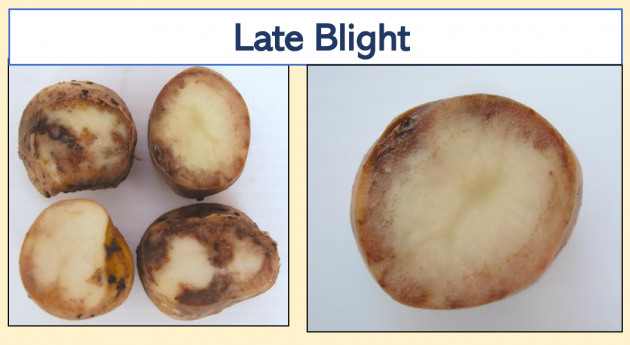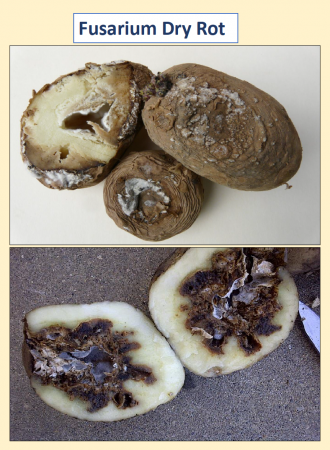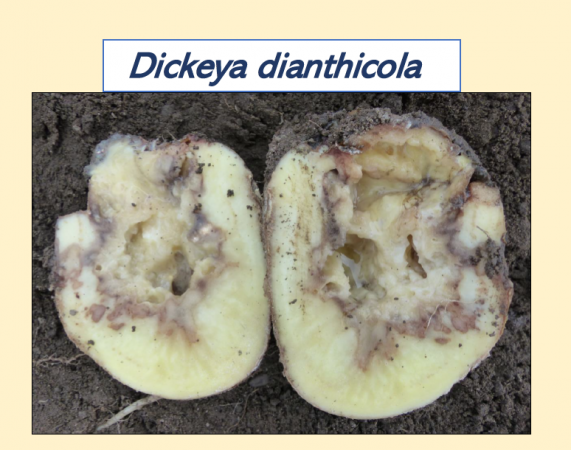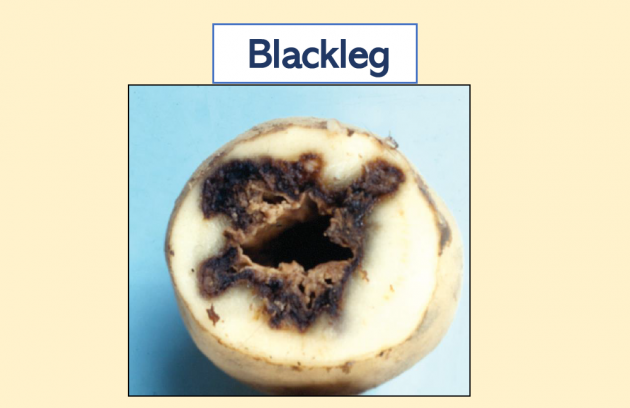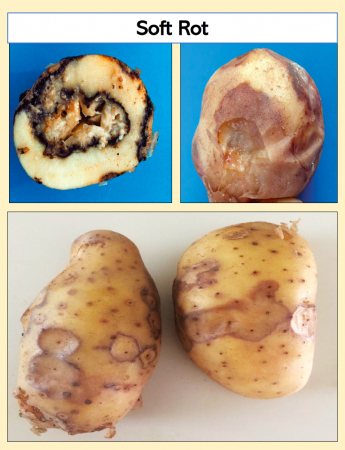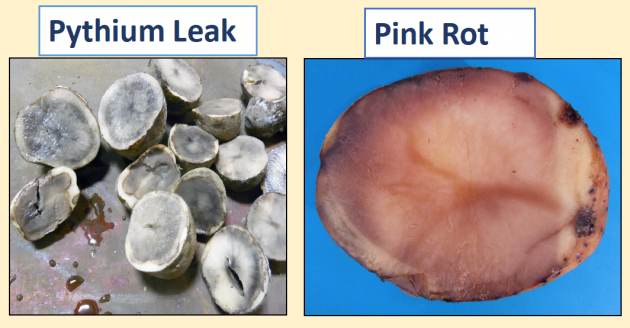
Ontario’s potato harvest is underway and most of the potatoes are coming out of the ground healthy, according to Eugenia Banks, potato specialist with the Ontario Potato Board.
While Banks notes there’s always some problems here and there, overall crop is healthy.
One of the problems Banks noted was a red-skinned variety with a high incidence of heat necrosis – so high that the crop was unmarketable, Banks added.
She refers Ontario growers to her checklist for a success potato harvest and emphasizes that harvest management is, in large part, bruise management.
In addition to a harvest resource, Banks collaborated with Mark VanOostrum, a field manager with WD Potato Limited based in Beeton, Ont., to write an article on managing important storage diseases.
“He is extremely knowledgable about the practical problems growers face,” Banks said. Their storage resource is posted below:
Important potato diseases and tips to manage them in storage
An essential requirement for a long storage period is that the storage conditions match the needs and the end use of the crop.
The storage requirements of the crop can be assessed before harvest by doing several test digs which allow to determine, if present, the distribution and level of tuber infection. If there are risky areas in a field such as low spots that have blighted potatoes, skip those areas, do not harvest them.
If you find about two per cent of blighted potatoes scattered throughout the field, try to market the crop straight from the field. If this is not feasible, store the crop near the storage door and move it at the earliest opportunity.
Fields with soft rots such as Dickeya and blackleg, can benefit from harvesting later in the storage season, allowing time for the diseased tubers to breakdown completely or enough so they are easily identified for grading. In many cases opening up a field and seeing a lot of soft rots can be very scary but moving on and returning in two weeks has allowed enough time for rots to breakdown completely and the crop store well many times.
The top five storage diseases that require continuous vigilance during the storage period are: late blight, pink rot, Pythium leak, Fusarium dry rot, and soft rots. Correct identification is critical to apply a post-harvest treatment and to implement specific storage-management practices. Applying a post harvest fungicide to a crop that is only showing bacterial soft rots can be a waste of time and money. Harvesting, handling, and storing problem potatoes require continuous attention.
Harvest
Harvest should start as soon as the tuber skin is set but be mindful that some varieties are taking three to four weeks post-topkill to setup enough for long term storage success. Do not harvest under wet conditions, especially at higher pulp temps, even above 18 C disease spreads rapidly. Ensure you have a bruise free program setup and all equipment is set to avoid drops, reduced conveyors speeds and full flow to reduce bruise.. Wounded and bruised tubers are readily attacked by soft rot bacteria. Tuber pulp temperature should be between 11 C and 18 C when digging the crop.
Post-harvest treatment
Phosphorous acid products (Rampart, Confine*, Phostrol) applied as post-harvest treatments reduce the incidence of late blight and pink rot in storage. Tubers should be rolling when they pass under the spray bar to ensure uniform coverage.
Storage management: Curing period – cooling period – holding period
A clean, sanitized storage is a must before storing potatoes. Grade out suspicious tubers and remove debris, clods, and dirt before putting the potatoes into storage. The three basic storage management tools available are temperature, humidity, and airflow.
One of the toughest situation potato storage managers face is when they realize that a potato crop in storage is at risk of deteriorating due to diseases. The critical point is to limit pathogen spread from diseased to healthy potatoes and to keep the problem from getting worse.
Curing period
Proper curing is necessary to heal cuts and bruises produced during harvest, to reduce pathogen spread, and to keep shrinkage losses at a minimum. The recommended storage temperature for curing potatoes at risk of wet rots is 10 C for two to three weeks with continuous ventilation to dry out wet tubers. The pile should be ventilated with dry air (humidifier off) until there is no further risk of breakdown. In some cases, this may take several weeks. If “hot spots” begin to develop during curing, supply higher airflow to the area to help prevent additional pathogen spread. Supplemental ventilation can be added by auxiliary fans on top of the pile or in the ducts below trouble spots. Some storage treatments are available to apply in through the humidification that could help reduce disease spread.
Cooling period. After the required curing period, adjust the storage temperature to the holding temperature. Slow and steady rates of 0.3F per day.
Holding period. Lower holding temperatures decrease the rate of disease progression. Any storage decision involving temperature adjustments must take into consideration the end-use of the potatoes. Processing potatoes need to be stored at higher temperatures than the seed and fresh-market crop; therefore, the option of low storage temperatures is not available.
Depending upon the nature and percentage of wet rot in the storage, the pile may need additional drying ventilation with reduced-humidity air during this period. However, reduced humidity results in additional shrinkage and delays wound healing, which can increase the incidence of Fusarium dry rot. Decreasing relative humidity in storage to 85 per cent or less can also decrease the secondary spread of the silver scurf pathogen. Still, evaluate other management strategies before reducing relative humidity.
Monitor the storages daily. Thermometers suspended at various depths in the pile provide a good indication of the average temperature.
Infrared guns are helpful in locating hot spots before they begin to sink and spread. Processing growers may want to measure carbon dioxide levels. If carbon dioxide builds up in storage, fry colour can be variable. Carbon dioxide sensors help to maintain desired CO2 levels
“Storage management is not just following general guidelines and recommendations. Every storage manager will be faced with situations requiring special management techniques and corrective measures. This is the art of potato storage management.” – Steven Johnson, University of Maine.
Print this page

